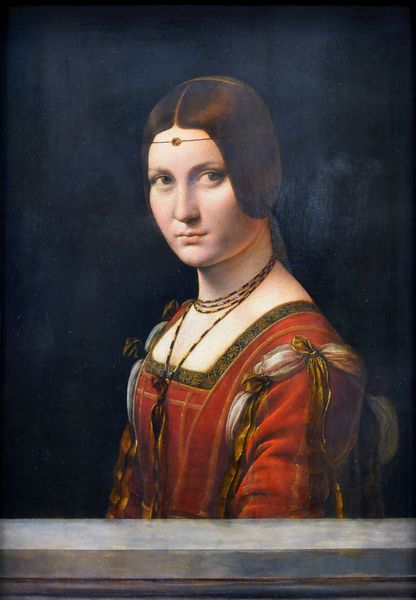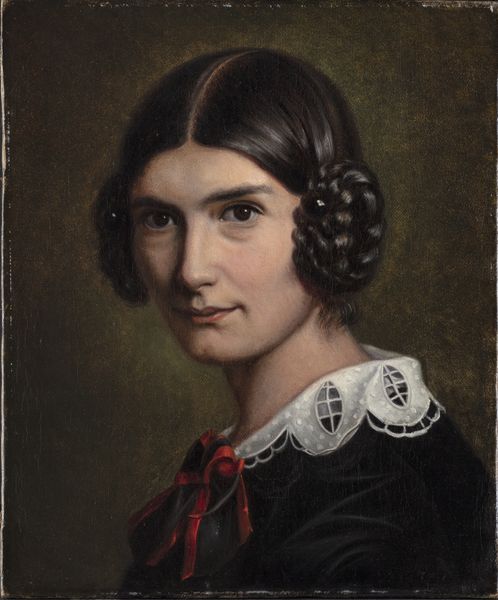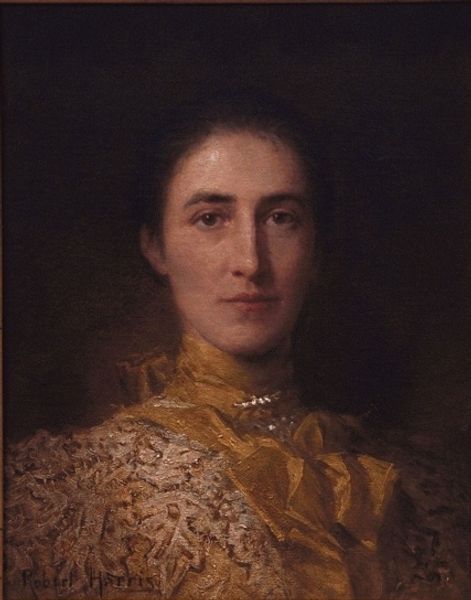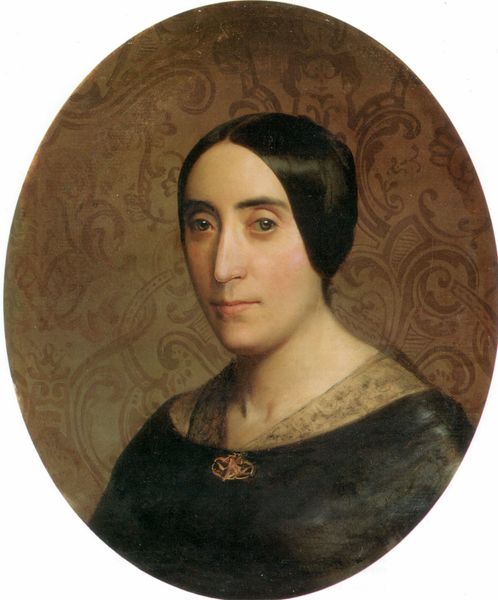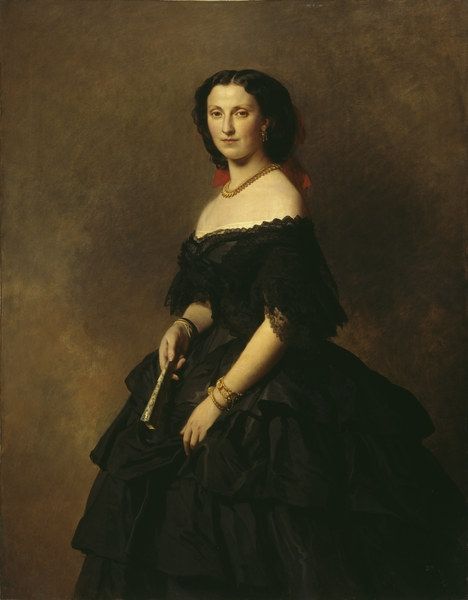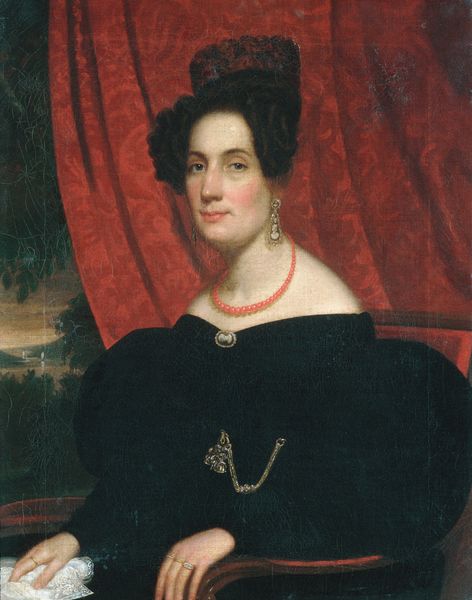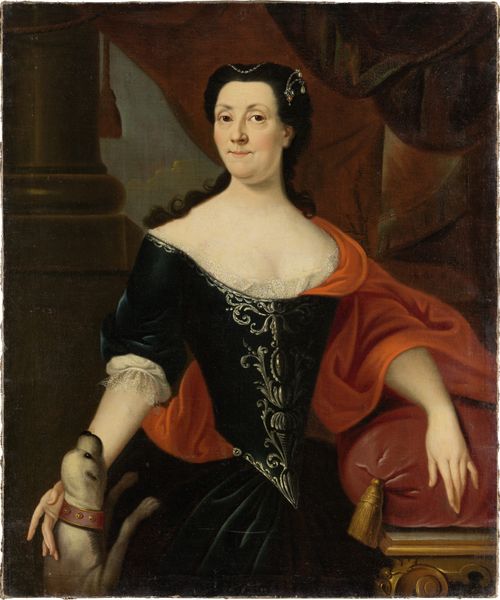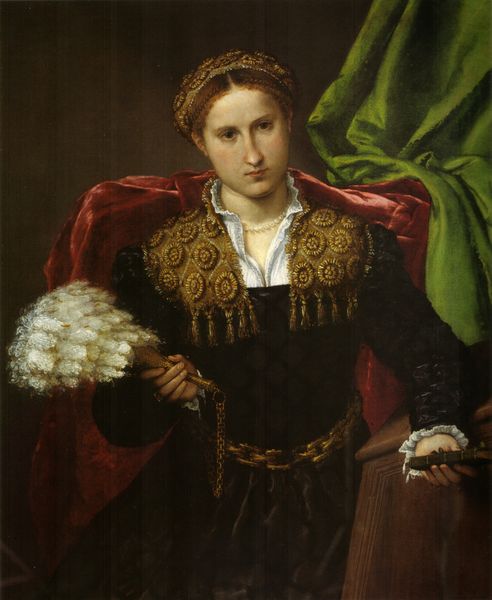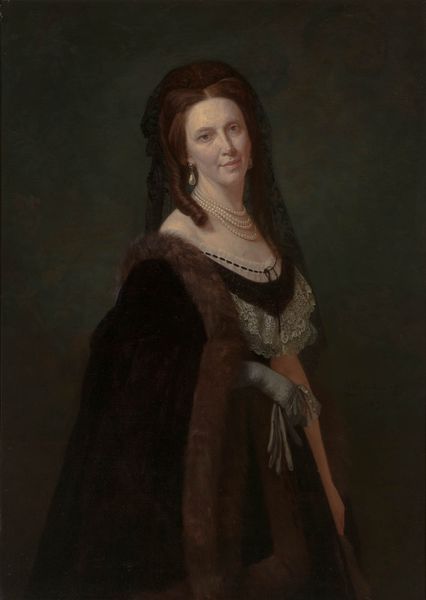
Dimensions: 62.5 cm (height) x 47 cm (width) (Netto), 78.1 cm (height) x 63 cm (width) x 6.6 cm (depth) (Brutto)
Curator: Looking at this portrait, my first impression is one of reserved elegance. There's a stillness to the composition that projects a sense of dignified quietude. Editor: And that's certainly what Carl Bloch seems to have aimed for in this 1868 oil painting, "The Artist's Wife, Alma Bloch, née Trepka." Bloch was known for his contributions to both Realism and Romanticism, blending styles in ways that can be intriguing. Curator: Indeed. That diamond ornament on Alma’s cap – doesn’t it feel almost like a halo? Perhaps it's about suggesting wifely virtue or even sanctifying the domestic sphere. The floral decoration adds a softer contrast to this message, wouldn't you say? Editor: Yes, there's that deliberate placement, high on the head, yet asymmetrical. The flower motif, juxtaposed with what looks like rather severe, formal dress. Perhaps Bloch is using it to play with traditional constraints placed upon women? There is an apparent tension that I wonder about. Curator: The heart pendant could indicate romantic love, and fidelity. We could also dive into codes of dress of the time. The painting is called a 'portrait' in terms of style. But there is little context about Alma herself in the artistic vocabulary. How did that sit in broader society? It really highlights for me the tension between individual identity and prescribed roles within marriage in the 19th century. Editor: And within the confines of Academic Art’s conventions as well. What are we to glean from Bloch choosing oil-paint in portraiture to represent his beloved spouse? Perhaps emphasizing status. Perhaps solidity and longevity of image. The materials used hold considerable weight for understanding the artist's intention. Curator: And speaking of intent, is he really seeing *her*, or is he idealizing the role she plays in his life as a wife and muse? The question feels particularly sharp when viewing art from eras with restricted societal roles. The diamond may denote value, even status, but what does Alma *herself* truly value? Editor: It is in asking such questions that we, as modern viewers, begin to truly engage with works of the past, understanding both their overt representations and the complex layers beneath. Thank you for unpacking the dialogue of visual vocabularies, and reminding us to approach such portraits with our critical perspective!
Comments
No comments
Be the first to comment and join the conversation on the ultimate creative platform.
